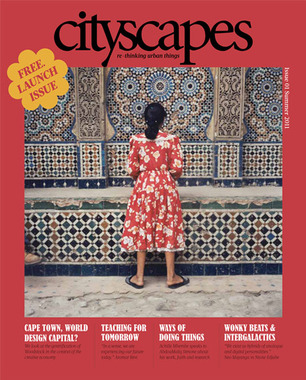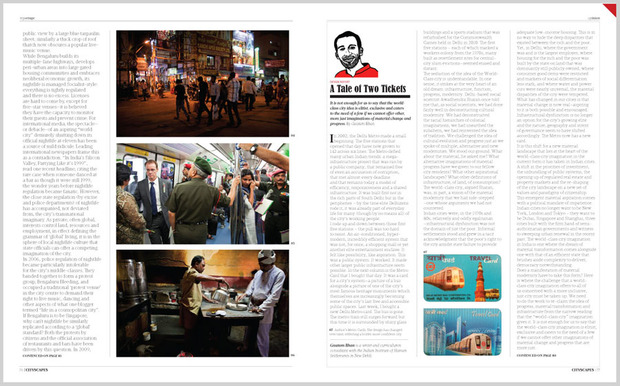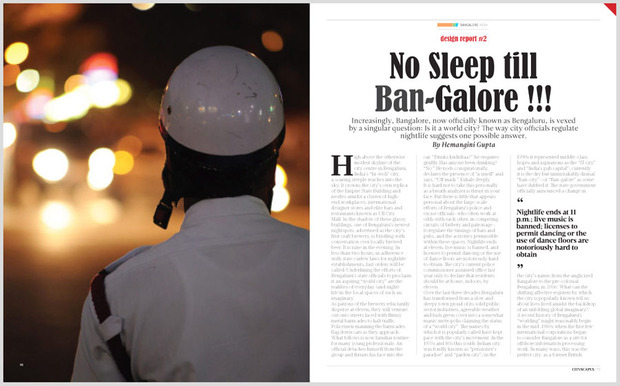Cityscapes
Discussing the future of urbanization in the second edition of a biannual publication



What is a world-class city? This is the question that leads the second issue of the new urban-focused magazine Cityscapes, published by the University of Cape Town’s African Centre for Cities. The center’s director and consulting editor of the magazine, Edgar Pieterse, features prominently in Gary Hustwit’s recent documentary Urbanized which explores city design and planning, as well as the fate of the Olympic city once the games are gone.
The notion of the city as a subject of design has come up in recent conversation once again—besides Urbanized, last year also saw the Cooper-Hewitt Museum’s second “Design with the Other 90%” exhibition, this time themed on cities. Meanwhile the World Design Capital biennale celebrating urban regeneration through design is also growing in profile, this year hosted by Helsinki.

Most of these initiatives brandish the fact that more than half of the world’s 7 billion people now live in cities, and that the world population is predicted to reach 9 billion by the year 2050—80% of whom will be living in cities. However, what’s not been talked about as much is the prediction that 97% of that 2 billion will be born in the developing countries of Africa, Asia and Latin America.

This “Global South” is what the Cityscapes magazine concerns itself with, while discussing why the question of a “world-class city” is relevant. Are the exponential growth rates of the BRICS (Brazil, Russia, India, China and South Africa) going to result in blind urban mimicking of the aspirational qualities of “world-class” Western cities without pause for redesign and improvement?
Co-edited by Sean O’Toole and Tau Tavengwa, the team behind the heyday of the Art South Africa quarterly, the magazine doesn’t simply rely on design to answer the question, but looks to academia, art, philosophy, music, photography and on-the-ground reporting to paint a comprehensive picture. At the same time, its application of a design lens to unlikely bureaucratic subjects gives the publication a refreshing, totally unique angle.

The result has been described as Africa’s answer to Monocle, something of a gritty, pensive, self-aware, counter-revolutionary alter ego of the British “city porn” Bible. As the magazine’s designer Tavengwa has applied a design-style sheet that balances sophistication and earthiness, which is rumored to have brought in fan mail from Rahul Mehrotra, the head of Harvard Graduate School of Design.

The first edition is completely sold out, but the second issue is currently available from the African Centre for Cities (contact them through their website to receive a print copy). Content includes design reports on the “world-class” development of Johannesburg and Bangalore, and an interview with the mayor of the most dangerous city in the world, Mogadishu. Contributors include Kenyan author Binyavanga Wainaina, Kerwin Datu, editor-in-chief of The Global Urbanist, narrative journalist Kevin Bloom and Congolese filmmaker Djo Tunda wa Munga.












